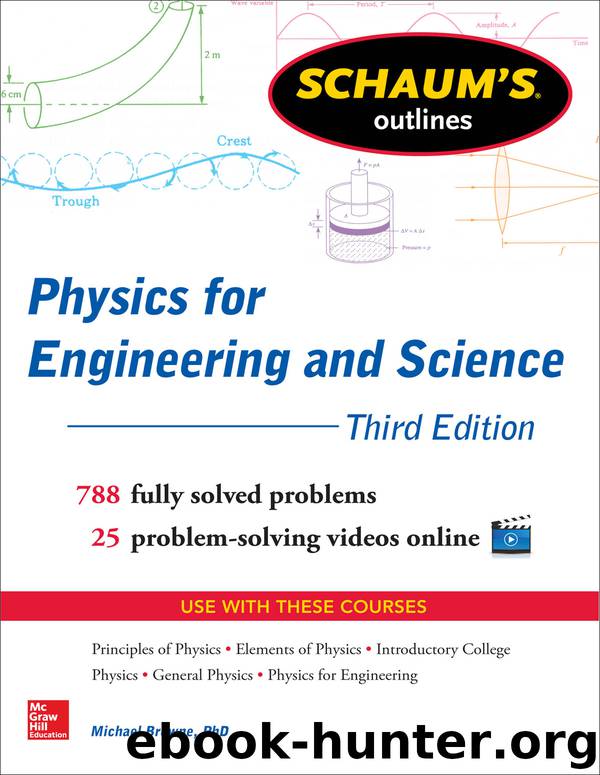Schaum's Outline of Physics for Engineering and Science by Michael Browne

Author:Michael Browne
Language: eng
Format: epub
Publisher: McGraw-Hill Education
Published: 2013-01-26T16:00:00+00:00
Fig. 19-1
PROBLEM 19.1. An ideal gas expands from p1, V1 to p2, V2 isothermally (at constant temperature). How much work does it do?
Solution
Observe that the work done in going from one state to another in a thermodynamic process depends on the path followed in the p–V diagram.
PROBLEM 19.2. How much work is done by a gas in going from p1,V1 to p2,V2 for the paths a, b, and c shown here?
Solution The work is the area under the curve.
There are an infinite number of different paths by means of which a system can go from one state to another. Some commonly encountered paths (processes) are the following: isothermal (constant temperature), isobaric (constant pressure), isochoric (constant volume), and adiabatic (no heat flows in or out).
Since the work done by a system (or on a system) depends on the path followed from one state to another, it makes no sense to speak of the “work in a system.” Similarly, the heat added to a system when it goes from one state to another depends on the path followed, so it makes no sense to speak of the “heat in a system” (even though the unfortunate term “heat capacity” is used for historical reasons). A system does, however, have a definite internal energy. For an ideal gas we saw that the internal energy depends only on the temperature and on the amount of gas (Eq. 18.5). For a monatomic gas, E = 3nRT/2. Changes in internal energy depend only on the initial and final states and hence are path independent.
When heat is added to a system, two things can happen. The internal energy of the system may increase, or the system may do work on its surroundings. Either or both may occur. Applying the conservation of energy law to this situation,
Download
This site does not store any files on its server. We only index and link to content provided by other sites. Please contact the content providers to delete copyright contents if any and email us, we'll remove relevant links or contents immediately.
| ASVAB | GED |
| GRE | NCLEX |
| PRAXIS | SAT |
| See more | Flash Cards |
| Study Guides | Study Skills |
| Workbooks |
Talking to Strangers by Malcolm Gladwell(13201)
The Compound Effect by Darren Hardy(8793)
Tools of Titans by Timothy Ferriss(8196)
Wonder by R. J. Palacio(7981)
The Lover by Duras Marguerite(7811)
A Court of Wings and Ruin by Sarah J. Maas(7632)
The Circle by Dave Eggers(7025)
Deep Work by Cal Newport(6860)
Kaplan MCAT General Chemistry Review by Kaplan(6857)
To All the Boys I've Loved Before by Jenny Han(5763)
Wiseguy by Nicholas Pileggi(5655)
The Body: A Guide for Occupants by Bill Bryson(4962)
1,001 ASVAB Practice Questions For Dummies by Powers Rod(4439)
Eat That Frog! by Brian Tracy(4416)
Cracking the GRE Premium Edition with 6 Practice Tests, 2015 (Graduate School Test Preparation) by Princeton Review(4211)
Pre-Suasion: A Revolutionary Way to Influence and Persuade by Robert Cialdini(4127)
Barron's AP Biology by Goldberg M.S. Deborah T(4086)
ACT Math For Dummies by Zegarelli Mark(3974)
Alive: The Story of the Andes Survivors by Piers Paul Read(3959)
